'Superstition swallows everything and examines nothing.':
Tacitus.
Thanks to Dick Osseman for his critically important photos: his website.
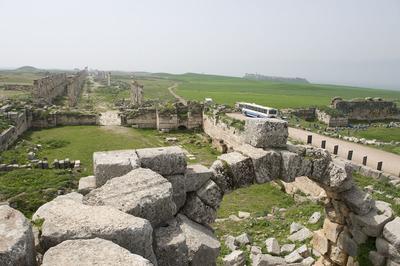
Figure 1: dosseman: Apamea-Afamia, Syria 10,000BC was a very large city. It is little more than goat pasture today. Plasma connections planed the city to its foundations. The columns in the back ground were erected for the tourist trade.
Greek place names may or may not have survived the appearance of the Z-pinch Aurora (ZPA) 10,000BC when the Great Technology Reset (GTR) occurred, but the cities did not. This article will look at remains of some Levantine cities found in the Osseman Collection. Those scattered along the Mediterranean Coast were Greek. Enough Grecian inscriptions survive to confirm this. Little else remained of them. Foundations of theaters, stadiums and large municipal buildings survived to a small degree. What the ruins make clear is absolute devastation visited on all Antecedent cities. Ruins in the above image represent a small part of Apamea's urban area. Houses of the lower classes were entirely erased. Plasma connections reduced these areas to livestock pastures. The fields where sheep and goats graze today were once occupied, prior to the GTR, by thousands of homes. Ruins like Apamea are storm pennants warning what is going to happen at some point in the future. Devastation visited upon Antecedent Levantine (AnL) cities has been fobbed off on earthquakes, tsunamis, etc. This is not an accident, but part of the general hollowing out of western intellectual inquiry. The New Learning started by the Medici of Florence in the fifteenth century is now being terminated. New Learning was about replacing legend with facts. Now, this is being reversed. History has been turned into a museum diorama where shaman narratives replace facts. Either the z-pinches are dealt with or the plasma connections will reek havoc on mankind once again. The following images are a small sample recording what befell the Antecedents.
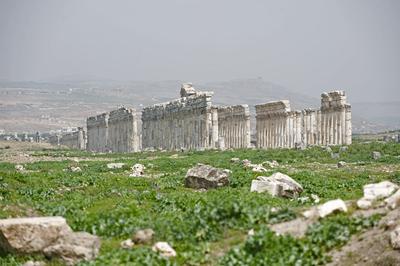


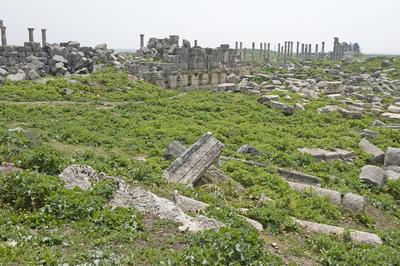
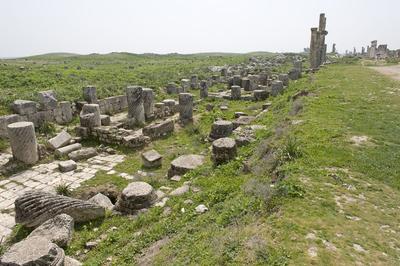

Figure 2: dosseman: Apamea, Syria was an impressive and prosperous AnL city. Remaining ruins are a small fraction of what once was a large urban location. As previous articles have shown, columns survive better than solid block walls. The city was reduced to a livestock pasture after the period of plasma destruction passed.
Prior to 10,000BC, the Mediterranean basin was the scene of vibrant civilizations. Those with cities along the eastern Mediterranean coast were Ionian Greek. All were destroyed. Apamea was typical of catastrophic destruction that terminated AnL cities. Unlike some Egyptian temples like Hathor's, only remnants of Apamea's major buildings survived. Columns (fig.1-1,-2) were resembled for the tourist trade. Originally 1200 columns lined the avenue, 400 were restored1. Surrounding green fields contained dwellings of the lower classes. Instead of acres of ruined buildings, one sees only a few fragments protruding above the soil (colluvium); plasma swept everything away. The lost of life was prodigious since residents had no place to shelter. (Apparently only the Sardinians built structures, nuraghi, as shelters against z-pinches.) As in Egypt, destruction was not so severe as to terminate literacy or religion. The extent of ruins indicate Apamea was the center of a strong economy.
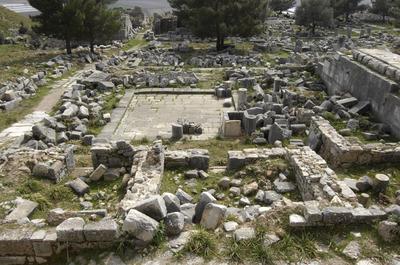




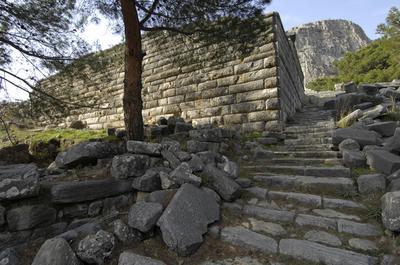
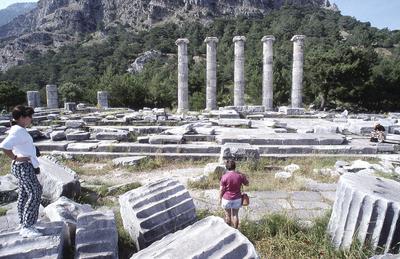

Figure 3: dosseman: Priene, Turkey is now a debris field. Few of its solid walls remain. The bottom row of images shows the foundation of a building with its five columns (possibly reassembled). Drums lie scattered about just as the levitating effect of ZPA left them. Earthquake damage does not look like this.
Priene, like all other Antecedent cities, is just a debris field with most wreckage missing. Excavation, fig.3-5 exposed the thick layer of colluvium covering foundations; remaining portions above the soil level disappeared. The retaining wall, fig.3-6, remains in good condition. This might explain why nuraghi like N. Mandra Antine had massive five meter thick walls. The stone mass helped avoid the destructive effects of plasma. The levitating effect of z-pinches is demonstrated in the last row of images. The building was pulled apart, and the pieces scattered around about the building.
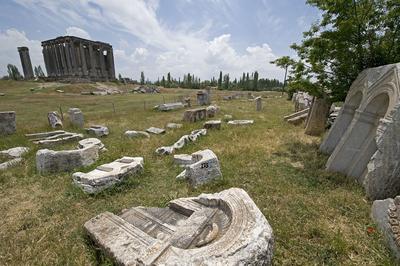
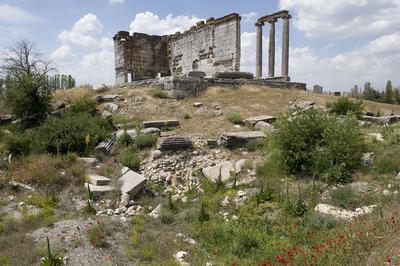
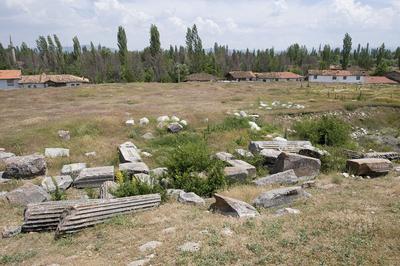
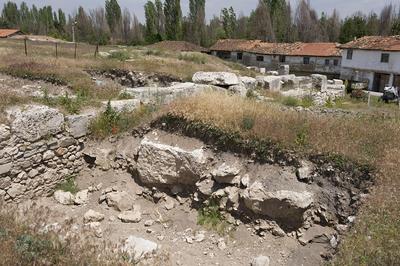
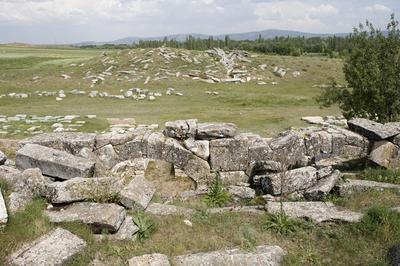
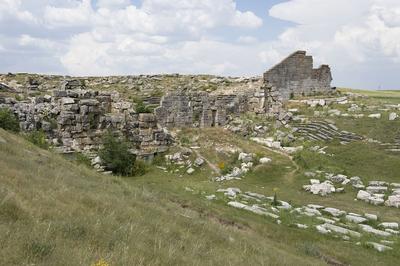
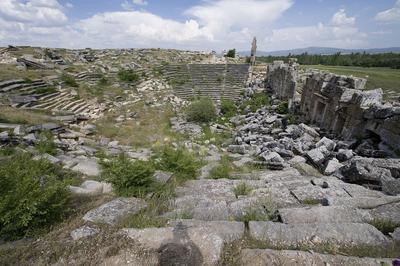
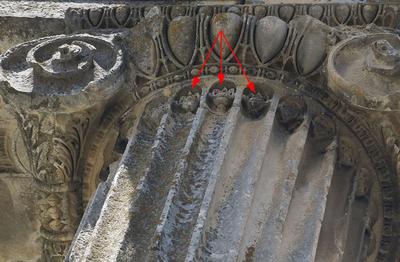
Figure 4: dosseman: Aizanoi, Turkey is hardly recognizable as urban area. Scattered blocks protrude above the surface. Few of its solid walls remain. Much of the stadium seating (background) was left piled up, fig.3-1 indicating where gravity persisted.
Aizanoi, like all other Antecedent cities, is a scene of desolation. It was not a coastal city yet it must have had a strong economy as indicated by the presence of a theater (fig.4-1) and stadium (fig.3-1,-2). A stadium suggests Aizanoi was a regional commercial hub. Trade with the Orient must have been its source of wealth. Greek script found on award medallions at the theater and on tomb stones showed the area was Greek speaking. On columns at the end of the flutes, there are small carvings which could hardly be seen from below (red arrows). It is another example of Antecedent fascination with stone carving. The few ruins protruding above ground merely hint at the history buried below.
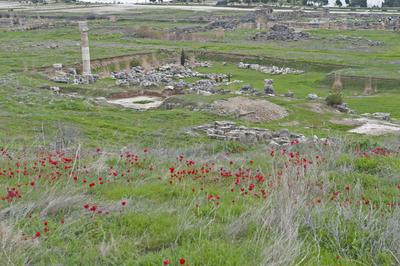

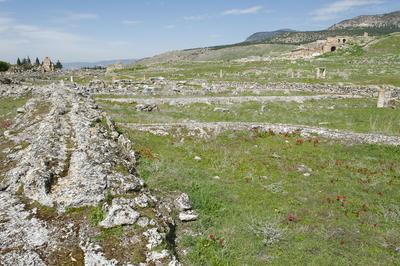
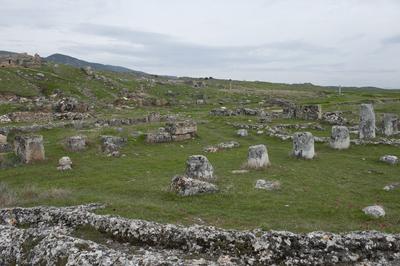

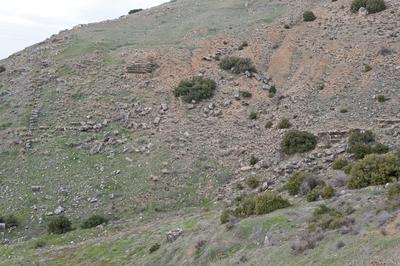
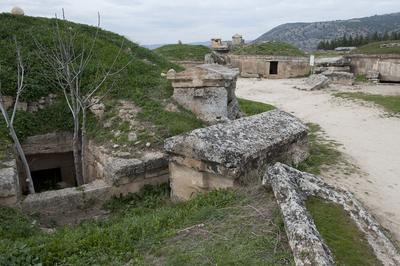

Figure 5: dosseman: Hierapolis, Turkey is another debris field. The depth of excavation in fig.1-1 demonstrates the amount of colluvium burying the city.
Above are the remains of Hierapolis. Fragments of a few buildings remain. Mostly it is a goat and sheep pasture with carved stone protruding above the colluvium. Fig.3-2 is said to be a theater as indicated by a small fragment of seating on the hillside. Note the circular tombs, fig.4-1, they may have been built as shelters after the first appearance of the ZPA. Hierapolis is another obliterated Antecedent city showing what plasma can and will do to urban locations. Ignorance is no protection. The loss of life must have been massive.
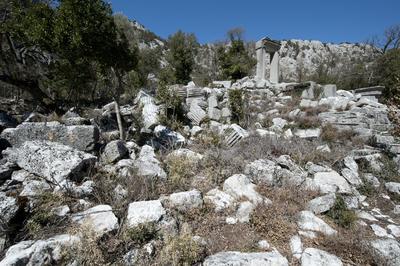
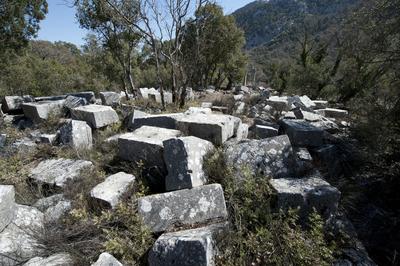

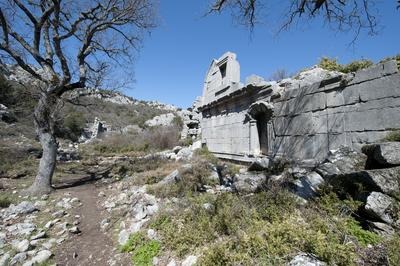
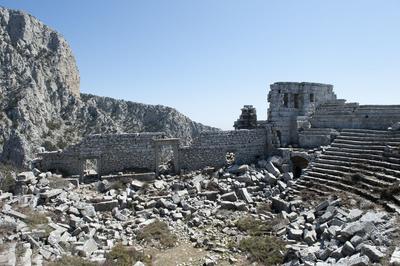


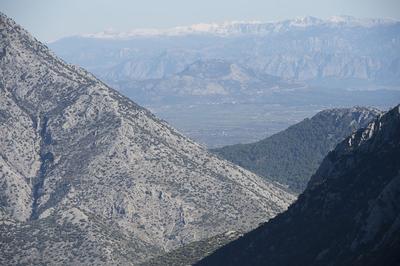
Figure 6: dosseman: Termessos, Turkey is now a debris field. The theater and fragments of a few other buildings remain, but mostly it is wreckage. Like all Antecedent cities, dwellings of common people are hard to locate.
At Termessos, above, a lot of stone blocks survived unlike Hierapolis, but plasma's levitating effects scattered them around. Greek script, fig.2-1, on a statue base shows that language was spoken a Termessos. Fig.4-2 indicates the city's elevation so it may have been at the confluence of trades routes or was a resort town.
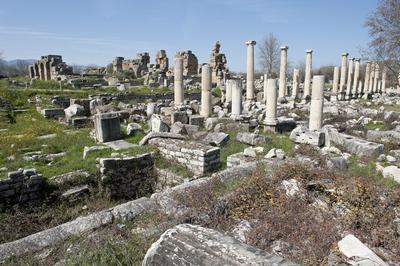

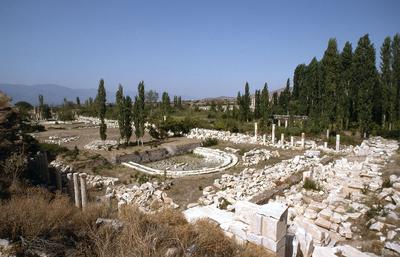

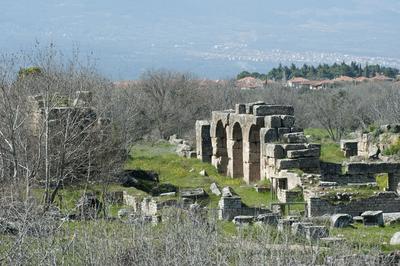
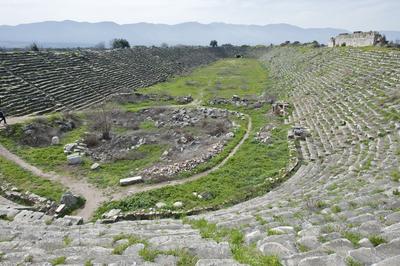

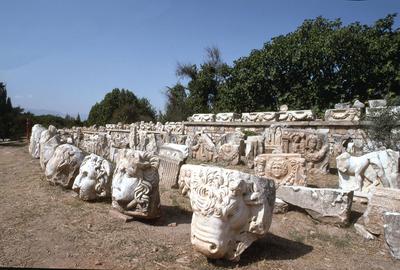
Figure 7: dosseman: Aphrodisias, Turkey is now a debris field. Columns may have been reassembled. A thick layer of colluvium, fig.2-1, covers part of a 'U' shaped feature in the middle distance. The stadium is fairly good condition. The cornice with relief of a puttee and nude rider are typical Antecedent detail.
ZPAs could move material over long distances. Petrified logs found in Flora, MS originated in the Appalachian Mountains. Much of the scattered blocks in images above, however, originated in buildings pulled apart by the levitating effect of ZPA. Levitation was the product of the ZPA, and colluvium the product of plasma connections. A current of plasma could be of any size. It is scalable but always with very precise effect on rock. Accompanying plasma would be electricity probably keeping connections coherent.
This article concludes my survey of the impact ZPAs had on the destruction of Antecedent civilizations.
Images are discussed left to right, top to bottom.↩︎

